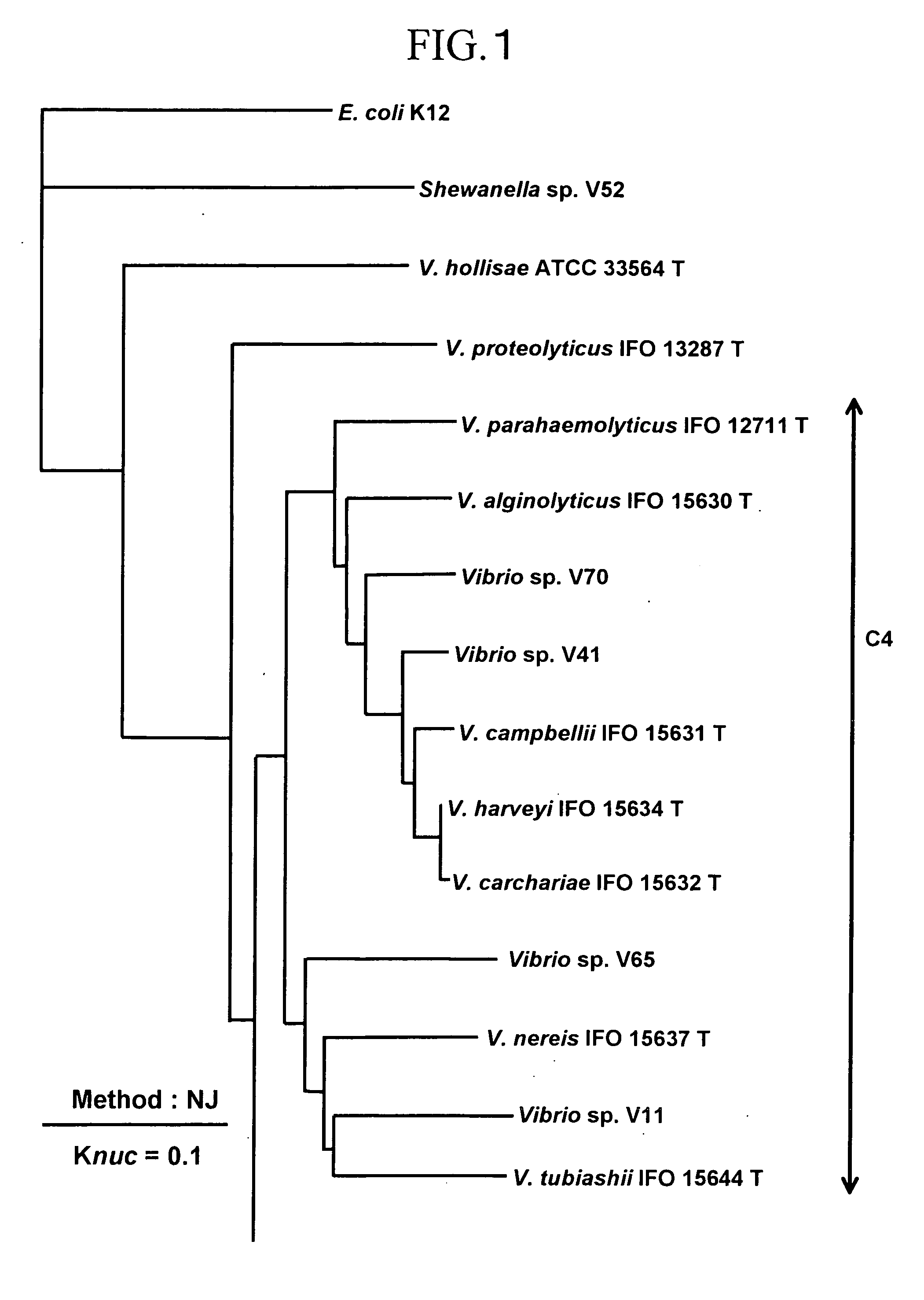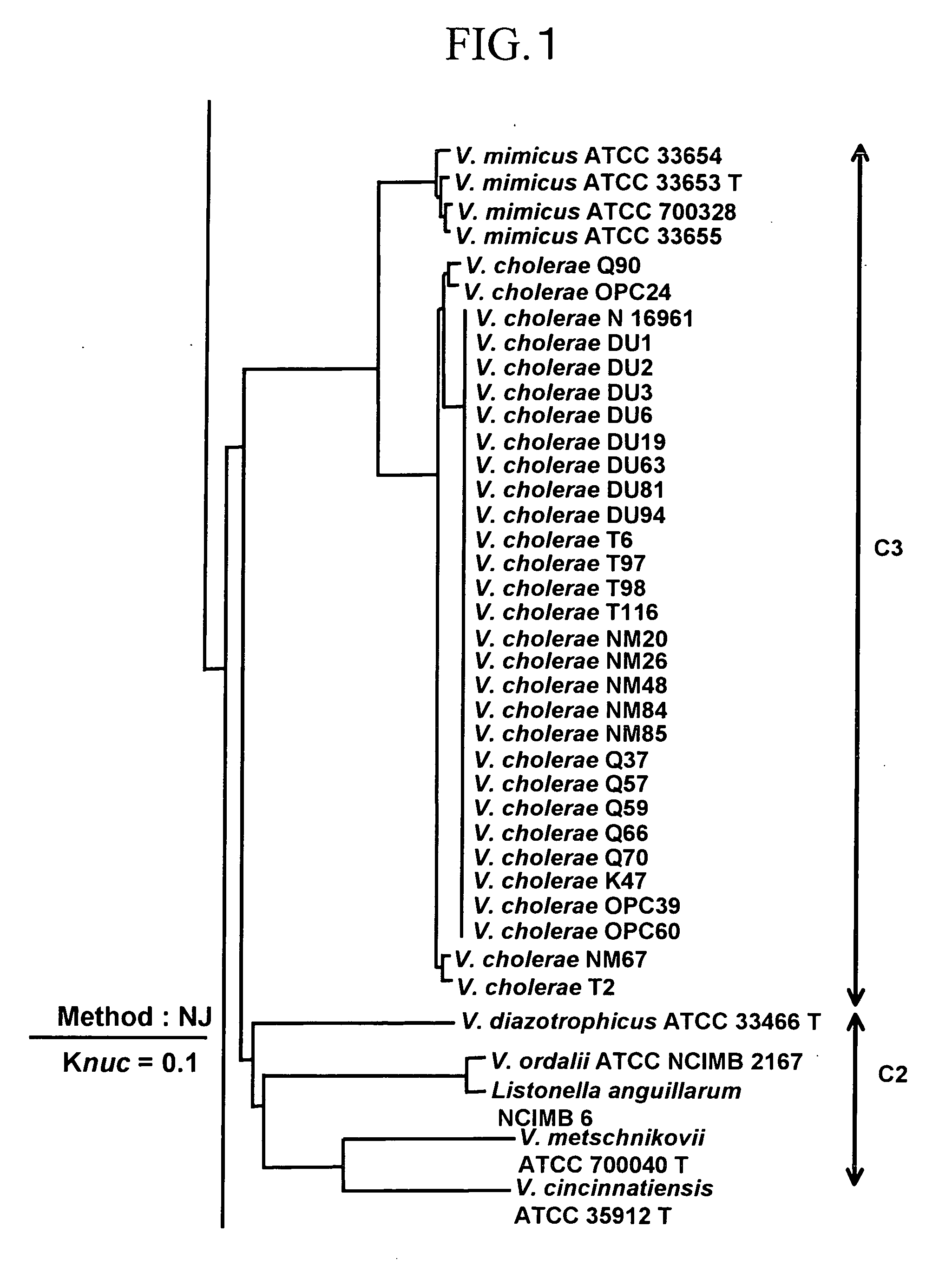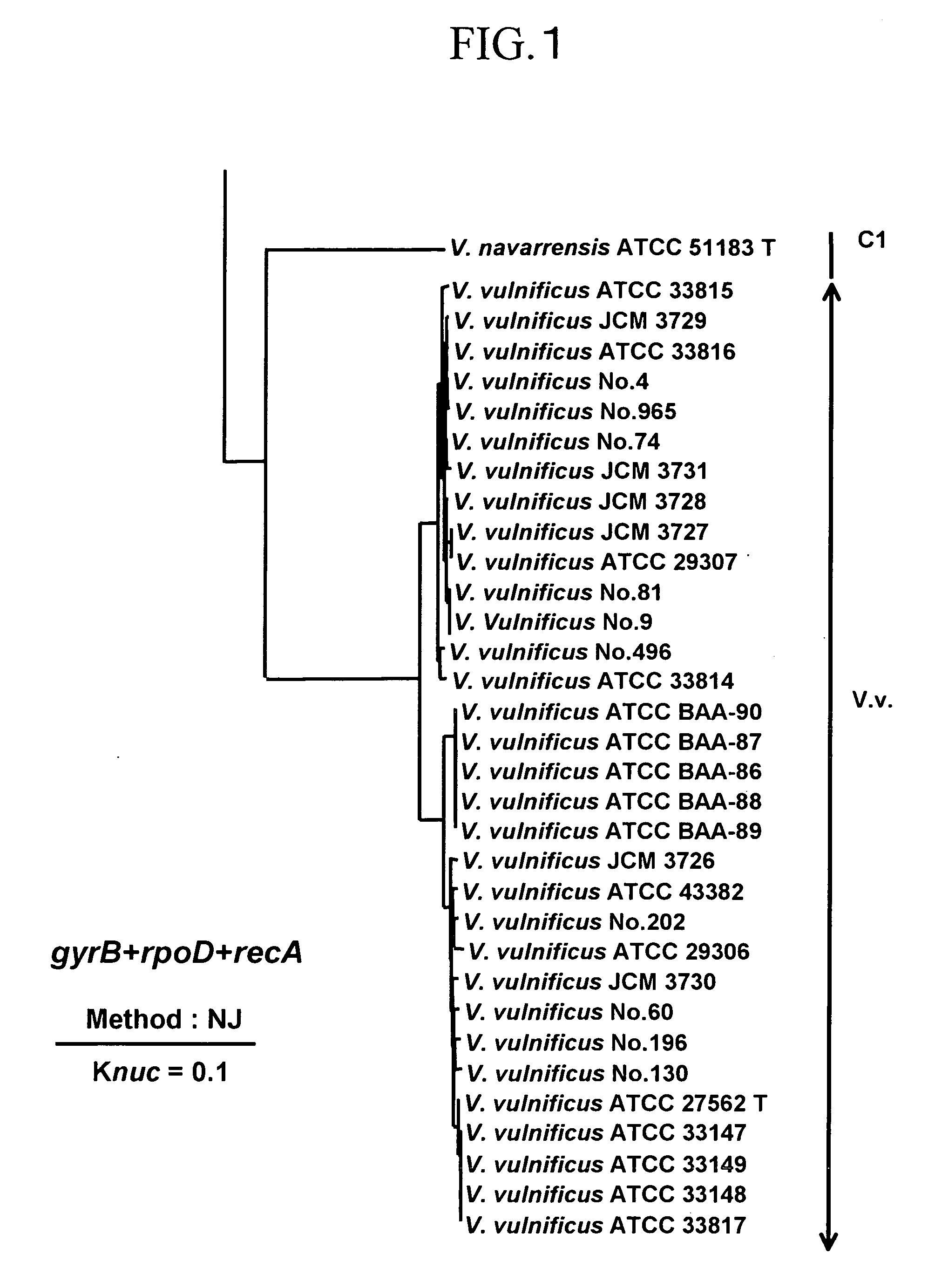Primer and probe for detecting vibrio vulnificus and detection method using the same
a vibrio vulnificus and primer technology, applied in the field of primers and probes for detecting vibrio vulnificus, can solve the problems of not being able to detect closely related strains, unable to detect, and using a sequence representing a population as a common sequence is very dangerous, so as to achieve sufficient amplification efficiency and amplification specificity, and low possibility of misidentification
- Summary
- Abstract
- Description
- Claims
- Application Information
AI Technical Summary
Benefits of technology
Problems solved by technology
Method used
Image
Examples
example 1
[0027] An example of using primers for gene amplification (shown in Table 2) designed and obtained according to the present invention using regions specific to Vibrio vulnificus is shown.
TABLE 2Primers for specifically detecting Vibrio vulnificusTargetgenePrimerSequenceLengthPositiona)DirectiongyrBVF15′-gatgcaccgcttgctatcatc-3′21121-141SenseVR15′-ttgtctgccatgaaggattcc-3′21740-720AntisenserpoDVrF25′-gaactgatgctcgatgtgttt-3′21442-462SenseVrR25′-ttgatgttgytyactgaaagc-3′21770-750AntisenserecAVVrecF25′-cctgtgtatgcgaagaarctt-3′21133-153SenseVVrecR25′-tcaaccgcmcctgagcgagca-3′21248-228Antisense
a)denotes positions from the 5′ terminus in the nucleotide sequences represented by SEQ ID NOS: 1 to 3.
[0028] In addition, primers described in claims 11, 14, 33, 35, 44, and 47 correspond to VF1, VR1, VrF2, VrR2, VVrecF2, and VVrecR2 in Table 2 and are represented by SEQ ID NO: 5, SEQ ID NO: 8, SEQ ID NO: 14, SEQ ID NO: 16, SEQ ID NO: 17, and SEQ ID NO: 20, respectively.
[0029] PCR was carried out...
PUM
| Property | Measurement | Unit |
|---|---|---|
| Annealing point | aaaaa | aaaaa |
| Annealing point | aaaaa | aaaaa |
| Annealing point | aaaaa | aaaaa |
Abstract
Description
Claims
Application Information
 Login to View More
Login to View More - R&D
- Intellectual Property
- Life Sciences
- Materials
- Tech Scout
- Unparalleled Data Quality
- Higher Quality Content
- 60% Fewer Hallucinations
Browse by: Latest US Patents, China's latest patents, Technical Efficacy Thesaurus, Application Domain, Technology Topic, Popular Technical Reports.
© 2025 PatSnap. All rights reserved.Legal|Privacy policy|Modern Slavery Act Transparency Statement|Sitemap|About US| Contact US: help@patsnap.com



